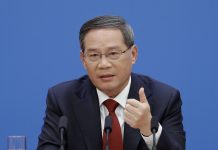BEIJING: As Washington is gearing up to reassert its presence in Asia-Pacific, it should set an example to play a constructive role in maintaining peace and stability, and fostering prosperity of the region.
The United States has been quite active in diplomacy with Asia-Pacific countries these days: U.S. Secretary of State Antony Blinken and Secretary of Defense Lloyd Austin are heading for Japan and South Korea, while the Pentagon chief will also visit India later this week.
Prior to the current U.S. administration’s first cabinet-level foreign trip to Asia-Pacific, U.S. President Joe Biden has held a virtual summit with leaders of the Quad — a loose group of Australia, India, Japan, and the United States. These back-to-back moves are clearly indicating the region’s strategic significance in Washington’s Asia-Pacific strategy.
A prosperous and stable Asia-Pacific is in the fundamental interests of all members in the region. Thus its peace and development need to be jointly safeguarded by all relevant parties, particularly such major countries as China and the United States.
While the Biden administration is drawing up its Asia-Pacific playbook, Washington needs to appreciate that development is what the region most aspires for at this utterly challenging moment, instead of another round of geopolitical confrontation.
Economically dynamic though as a whole, the Asia-Pacific region is still facing a fleet of conundrums such as an accelerating climate change for island countries, chronical poverty and underdevelopment in Southeast Asia, as well as lingering security concerns in Northeast Asia.
Extensive development deficits are one of the most notable and urgent problems. The Asian Development Bank estimated in 2017 that for Asia alone, 26 trillion U.S. dollars are needed in infrastructure investment until 2030. In the meantime, the number of people living in poverty in East Asia and the Pacific would go up by as many as 38 million in 2020 alone due to the COVID-19 shock, the World Bank has estimated. – Agencies





